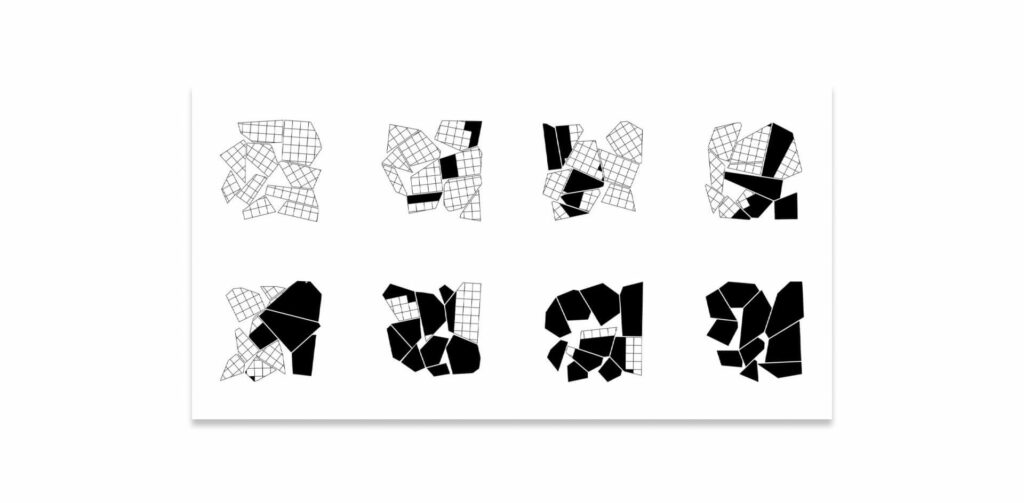How can mathematics, algorithms and coding become strong tools for artistic creativity? In this talk titled “Strength in Numbers”, dutch artist Frederik Vanhoutte takes us on a journey through his artistic practice and through the principles of Generative Art. This lecture has been recorded on 10/07/21 at Pilar (Brussels) as part of the Satellite Program of Order of Operations, an exhibition by Ohme, in coproduction with Bozar.
Here are my highlights from this presentation:
In a comprehensive and thought-provoking presentation, Frederik Vanhoutte took the audience on a journey through the nuanced landscape of generative art, illuminated by his 17 years of experience with Processing, a programming language and environment that simplifies the complexities of Java. The presentation was not just a technical exposition but also a philosophical exploration of generative art as a medium, a technique, and a philosophy.
Frederik began by discussing the foundational elements of generative art, starting with the basic act of subdividing a triangle into smaller shapes. He highlighted the importance of introducing variability to create unique and engaging outcomes, cautioning against the allure of randomness without purpose.
He also emphasized the significance of scale and the use of adaptable systems in creating complex designs, which can be seen in his “Order of Operations” project that started with a simple 10 by 10 grid, a familiar educational tool for understanding numbers and their relationships.

As the presentation unfolded, he delved into the mathematical underpinnings of generative art, describing how a library of mathematical concepts such as points, lines, and planes can be used to instruct computers to perform complex operations, like finding intersections and creating animations. This approach allows for the creation of dynamic and varied patterns, where the rules of the system can be adjusted to explore different artistic effects, such as translation, rotation, and deformation.
Frederik shared insights into the “add-nothing, subtract-nothing” system, which maintains the volume of shapes while allowing for the creation of interesting patterns and animations through limited shifts and rotations. This system was not only used for digital animations but also for creating physical 3D plots, as showcased in an exhibition featuring 24 plots that demonstrated the system’s versatility.
In the presentation, he narrated the animation of transitioning from a less captivating version to a more sophisticated one that allowed for the slicing and sliding of parts, akin to a reconfigurable cube. This process was enhanced by the addition of colors and the application of mathematical transformations, bringing the art to life.
Frederik then introduced a compelling allegory using the pendulum to illustrate the philosophy of generative art. He explained how a simple pendulum, when graphed, reveals the fundamental nature of its motion, oscillating between potential and kinetic energy. This predictable behavior contrasts with the chaotic motion of multiple pendulums of different lengths or the complex dynamics of a double pendulum system, where predictability gives way to complexity and sensitivity to initial conditions.
The metaphor was extended to generative art, where simple rules do not always lead to simple systems, and small changes can have significant, unpredictable outcomes. Frederik drew parallels between the behaviour of pendulums and the unpredictability of complex systems in real life, such as political or economic systems, which can be drastically altered by minor factors.
The presentation concluded with a reflection on the balance between seeking control with simple rules and the inherent complexity that arises from interactions within systems. Frederik emphasized that generative art, much like the pendulums, can serve as a model for understanding the world, highlighting the beauty and complexity that emerge from simple beginnings.
Throughout the presentation, he maintained a balanced yet friendly tone, inviting the audience to consider the broader implications of generative art beyond its aesthetic value. He encouraged a deeper appreciation for the intricate relationship between mathematics and art, and the ways in which generative art can mirror the complexities of the world around us. The presentation was not only an exploration of artistic technique but also a philosophical inquiry into the nature of control, complexity, and creativity.
Watch the whole presentation for more insights & visuals:
